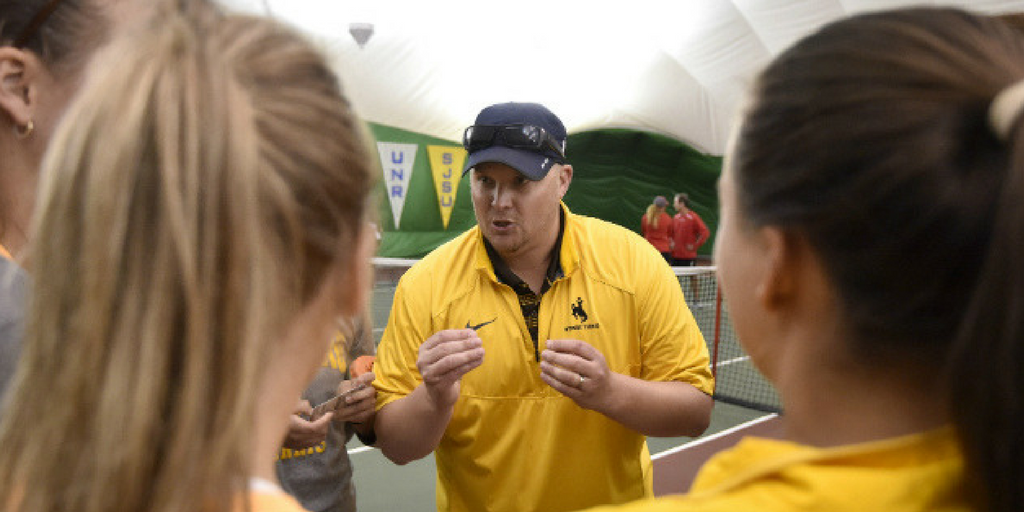“Tennis is declining in America,” says
Dean Clower, director of tennis at the
University of Wyoming, based in Laramie. “The numbers don’t lie.” Yet the game seems to thrive in Wyoming, whose population is the smallest of the 50 American states. Despite this, Wyoming ranks in the top 10 states in average fan attendance per tennis match, says Clower. “Tennis is almost the best-kept secret in the country,” he notes. “We have to find a way to make it quicker, more exciting, more of an event.”

Dean Clower
Clower’s mantra is to “make the smaller events the biggest events.” In Laramie (population 30,000), there’s one tournament annually, the Alpine Open each summer, and it’s a big success. It’s a USTA event that Clower runs with his assistants and local support; there’s food, drink, sponsors, tents. “People come not only for the tennis,” Clower says. “You want them to bring the family, and have social opportunities, things that meet the needs of both adults and kids. Put some 10-and-under courts on a slab, so the kids can play, too.”
Instead of three-day tournaments, Clower recommends one-day or even half-day events to draw players and crowds more easily. To speed up the action, he suggests eight-game pro sets instead of the best-of-three-set model. “No-ad scoring is definitely another idea to talk about,” he says. “We could also do away with the warm-up.”
The financial cost of playing junior tennis drives many youngsters away from competitive ball in a country that has so many different recreational sports and activities available. “It’s very hard for juniors to afford all this travel unless they come from a well-off family,” he explains. “A kid has to spend so much time and money going to all these different tournaments to get higher-level competition. The family will drive three hours to earn points. Then the kid may play someone at a lower level and win 6-0, 6-0. They’ve wasted $400 on travel and hotels. Why spend the money to do that?” He contrasts this with a one-day local event in Laramie, with matchups set using UTRs. “The same kid might lose 4 and 4, or 7-5, 7-5, against a good opponent. Their UTR goes up. It’s a quality event where you’re not wasting your time.”
"Smaller places might see only one USTA tournament nearby per year—how can you get a ranking without expensive travel? Instead, with UTR, you could play a match that counts every weekend."
The
level-based play that UTR encourages makes such small tourneys very feasible. “You can take five boys and five girls in Laramie and put them in the same draw, with similar UTRs,” Clower says. “Little towns can take three boys and three girls and have a Saturday morning event—as opposed to those small-town kids who drive four hours to New York City to get beaten, 6-0, 6-0. Smaller places might see only one USTA tournament nearby per year—how can you get a ranking without expensive travel? Instead, with UTR, you could play a match that counts every weekend.”
UTR could even enable Clower himself to play more tennis, which he’d love to do. He played varsity ball at
Lamar University in Beaumont, Texas, and was ranked among the top 50 college players in doubles in 2005. Unfortunately, in 2006, Clower was diagnosed with multiple sclerosis (MS), which blinded his right eye and damaged his sense of balance. Even so, he was eager to play on a USTA 4.5 league team. But he was stuck with a 5.5/6.0 rating, due to his varsity record. Clower appealed to the USTA to have his rating reduced to 4.5 but was denied. “There’s no one to play with!” he says. “You can’t play unless you play wheelchair tennis. If we had a system based on UTR, I could have played two or three tournaments, and the results would have shown that with MS, I was not playing at the same level—and I’d immediately have a UTR.”
Open the door to quality tennis events with UTR. Subscribe here.
 Dean Clower
Dean Clower

